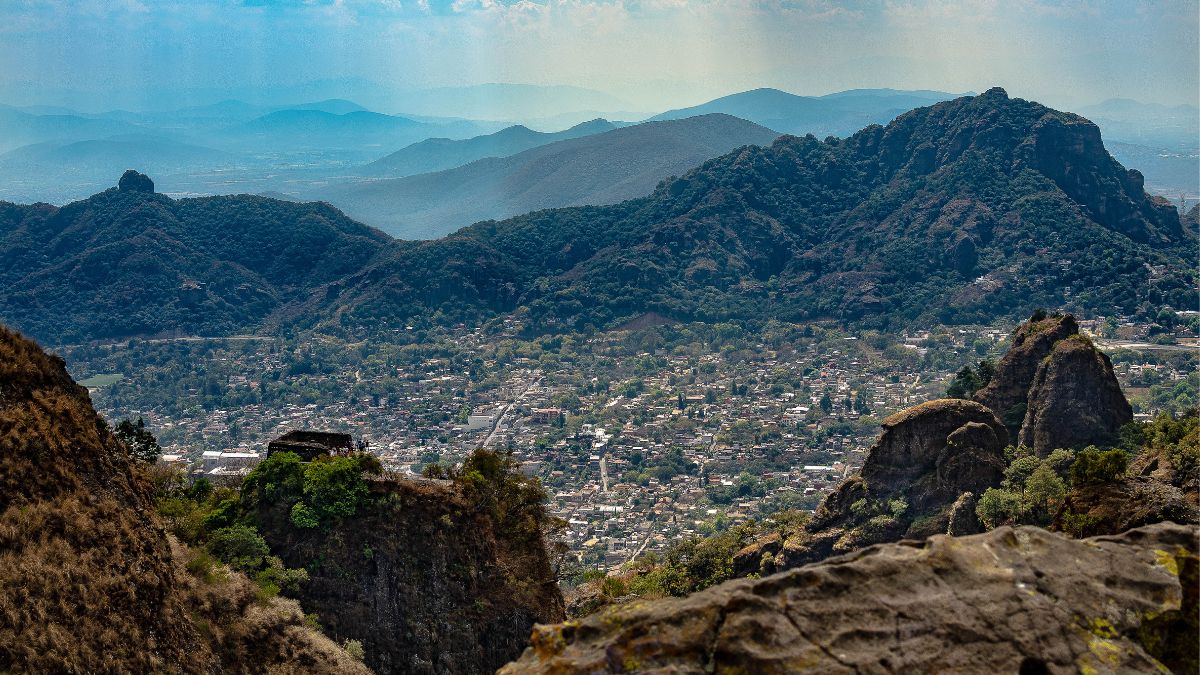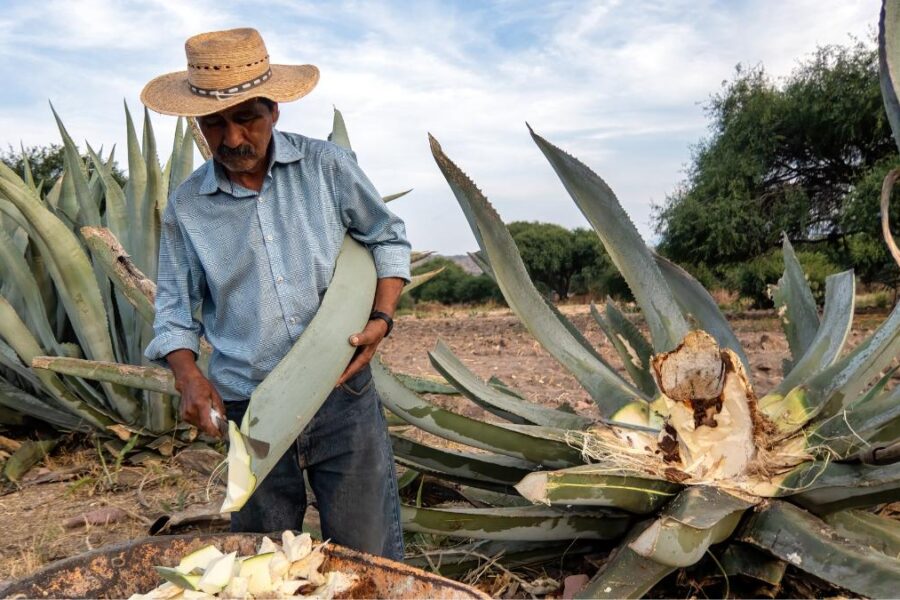Just over an hour south of Mexico City, you will find Tepoztlán. This beautiful town sits in a spectacular valley at 1,700 meters (5,500 ft) surrounded by remarkable geological forms including three massifs that form a triangle.
This valley has been a sacred pilgrimage site for thousands of years for Nahuatl-speaking peoples and other indigenous peoples. Today, Tepoztlán is renowned as one of the most important places in Mexico where ancient Mesoamerican traditions of magic and mysticism have been protected.
This region of Mexico is very rich in natural energy, with nearby volcanoes, rivers, lakes, waterfalls and natural springs. It has become a popular destination for people seeking alternative therapies but its roots as a place for mind-body healing and personal transformation are very deep.
According to ancient Mexican legend, this area was the birthplace of Quetzalcoatl who is the Aztec sky, creator god and feathered serpent deity.
As the legend goes it was in Amatlán de Quetzalcóatl on the eastern edge of Tepoztlán that Quetzalcoatl underwent his inner transformation and began his sacred journey to fully realize his potential as a great teacher.
The Pyramid Temple of Tepozteco

Towering over the valley is Tepozteco Mountain, which has an important archeological site with a pyramid temple on top dedicated to the Aztec god Tepoztecatl, the god of the sacred alcoholic beverage Pulque.
This 10m-high pyramid is perched atop a sheer cliff, and from the lookout, you have panoramic views of the Tepoztlán valley. It was abandoned 500 years ago during the Spanish conquest. Despite incredible oppression and the iron fist of colonization, many of Mexico’s ancient indigenous traditions of magic and mysticism have survived here.
What many people don’t know is that Mexico has an ancient mystical and herbalist tradition that rivals that of the other five cradles of civilization in Ancient Peru, Mesopotamia, Ancient Egypt, Ancient India and Ancient China.
These ancient traditions were a key part of the indigenous religions before the Spanish Conquest, and they have been documented extensively in Lewis Spence’s excellent book The Magic and Mysteries of Mexico.
Interestingly, he notes in the book that Nahuatl-speaking people have a close resemblance in language, customs, religion and art to the Coast Salish people on the British Columbia coast where I’m from.
Lewis Spence (25 November 1874 – 3 March 1955) was a Scottish journalist, poet, author, folklorist and occult scholar who extensively studied the ancient mythology and folklore of Mexico.
Tepoztlán was one of the places that stood out in his studies as an important place for magical and mystical traditions in the Americas. It’s no wonder that such a beautiful place has been considered sacred for thousands of years.
The Mysteries Of The Sacred Valley of Tepoztlán
Another interesting writer who has documented the magic and mysticism of Tepoztlán is Daniel Ruzo, who wrote a speculative book called El Valle Sagrado De Tepoztlán: Los Templos Atlantes De México, which translates as The Sacred Valley of Tepoztlán: The Temples of Atlantis In Mexico.
Daniel Ruzo was an esoteric sage, an occult researcher and a scholar of ancient cultures whose renegade work of archaeological speculation reminds me of the work of Graham Hancock whose recent book America Before: The Key to Earth’s Lost Civilization challenges the deceptive Colonial Narrative of indigenous people origins and roots in the Americas.
Ruzo made the controversial claim that the mountains surrounding Tepoztlán are not the product of nature, erosion and time, but vestiges of temples carved after the Flood by an ancient civilization.
The supposed authors of this sculptural legacy are the Masma, a culture made up of exiles from Atlantis, who also left similar marks on Marcahuasi in Peru, which Ruzo has also studied extensively.
While this is an outlandish theory, this is the kind of creative thinking that the magic and mystery of Tepoztlán inspires.
The work of Daniel Ruzo has been taken up by another Italian scholar based in Mexico City named Marco M. Vigato who has written another renegade book of ancient history and archeology called The Empires of Atlantis.
There is a strangely enchanting beauty here and this area is rich in ancient history and mythology from many cultures including the Aztecs, Toltecs and other Nahautl-speaking peoples.
If you want to visit one of Mexico’s extraordinary Pueblos Mágicos, Tepoztlán may be the most magical of them all.
Unique Ecotourism Experiences In Tepoztlán
Here are some of the more interesting places to visit and ecotours to experience:
Mexico’s first eco village based around permaculture and ecological design principles began in the valley just northeast of the town of Tepoztlán.
Huehuecoyotl is named after the Aztec coyote god of trickery, fire and fate. The Huehuecoyotl eco village offers tours and courses in permaculture that can be booked ahead of time.
2. Temachtiani Ecotourism Center
In Amatlán de Quetzalcóatl about 10 minutes drive from Tepoztlán you will find the Temachtiani ecotourism center, which offers lodging, food and ecotourism activities.
This center is managed by indigenous men and women in the local community. The name Temachtiani means “those who share what they know.” Naturally, this is a great place to learn about the local culture and traditions.
In the town of San Juan Tlacotenco just outside of Tepoztlán, you will find the longest lava tunnels in Latin America.
There are also many excellent caves to explore in the area such as Cueva del Arbol and Cueva del Ferrocarril-Mina Inferior.
- Animism And Nonduality: Exploring The Secret Language of Nature - March 9, 2025
- 10 Sustainable Travel Trends Driving The Future of Tourism - March 9, 2025
- 10 Tips To Sell Out Your Transformational Retreats In 2025 - February 20, 2025




